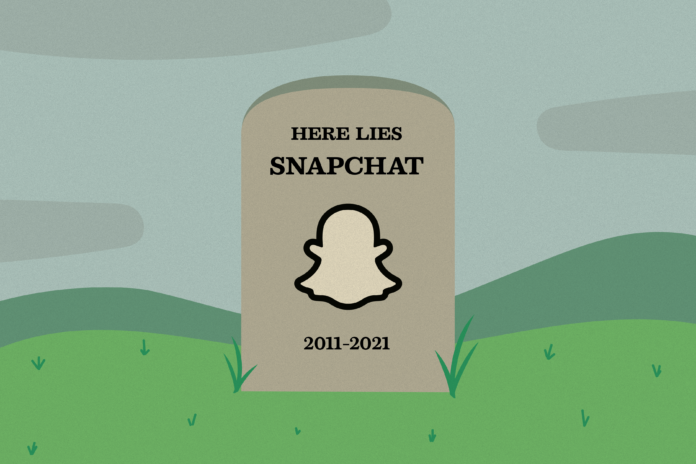Maybe it’s high time we ghost the Ghost
Snapchat is a wondrous little app. From its inception, users marveled at the novelty of posting a Snapchat story or sending a dog-filtered snap to their friends. In the past decade Snapchat has dominated as one of the most popular social media apps.
I was barely starting middle school when Snapchat made its debut on the App Store. I’d been on Facebook for all of two months—much to the chagrin of my mother—and Instagram for even less than that. When I downloaded the app I was instantly drawn to the disappearing nature of my content. I could send my buddies a pimply, brace-faced selfie and it’d be gone in a matter of seconds; we would even challenge each other to try to sneak in a screenshot in a snap that would only appear for one second.
It’s a bit sad, then, to see how Snapchat has fallen from its high praises. The social media app of our childhood has been pushed aside not only by other platforms, but by our own ever-evolving personal tastes.
My early attitude towards Snapchat could really be characterized as a sort of wonder toward the little yellow app. The novelty of being able to message your friends in a way that was impermanent was intriguing. It also reflected earlier sentiments about the internet at large. We’d been taught that what goes online exists forever, including your Facebook profile pictures from fifth grade (and yes, mine is still up). When we got the ability to go online without the penalty of things being permanent, we were all excited.
Now, however, folks have gotten pretty used to the idea of things staying on the Internet. We’ve been able to develop archives of old posts and memories on our profiles, and we’ve welcomed these nostalgia breeders on our platforms with open arms. Snapchat’s formerly cool feature has just become a reflection of old ideas about how we create and view content online.
Snapchat users also frequented the news section of the app, which provided short, story-form bits of current events presented like your everyday news channel. Prominent news sources like NBC launched “Stay Tuned,” a story that updates with breaking news stories multiple times a day. As teenagers, we felt that getting our news on Snapchat was like killing two birds with one stone. We got to check our streaks and feel like adults by checking the news.
Ever since former President Donald Trump’s presidency, however, the desire for more concrete and trustworthy news sources has been pushed to the forefront of everyone’s minds. NBC’s “Stay Tuned” may be connected to a valid news channel, but the fact that it’s on Snapchat gives it an informal connotation that has people turning towards more substantial sources for their current events.
We can speculate forever about the features of Snapchat, but one of the main reasons why Snapchat doesn’t do as well as other platforms is that you can’t truly cultivate your online persona on the app, which is sort of the reason why we go on social media. The permanence of posts on Facebook, Twitter and Instagram all contribute to our personal brands. If everything you post on Snapchat eventually disappears, could there ever really be a sense of a persona?
That’s why the beginning of Snapchat’s slow demise came in August 2016, when Instagram launched “Instagram Stories,” an obvious dig at one of Snapchat’s most distinctive features. Instagram chose to combine the best of Snapchat with the powerhouse platform that they’d already developed. Why would users choose to go to Snapchat when they had everything that used to make it unique on Instagram?
2016 was one issue, but the true kicker of the app came in 2020. Like most things in our lives, the pandemic made an absolute fool of Snapchat this past year. Why? There was nothing to take pictures of. The concept of posting your daily life was completely destroyed; everyone was living the same life and it really wasn’t worth posting about. Once the pandemic began, I gave up Snapchatting my friends almost entirely, save for a few posts on my private story. It even started to feel weird to still be on the app—almost juvenile.
I’d like to leave with a question: is Snapchat dying, or are we just getting older? The fall of Snapchat may be apparent to college students, but there’s a chance that the app can remain popular with the help of younger generations patronizing its fun photo-sharing capabilities. Either way, the app’s fate is in the hands of millions of users across the planet. It’s up to us to decide.
By Isabella Chuecos –– ifchuecos@ucdavis.edu Disclaimer: The views and opinions expressed by individual columnists belong to the columnists alone and do not necessarily indicate the views and opinions held by The California Aggie.





